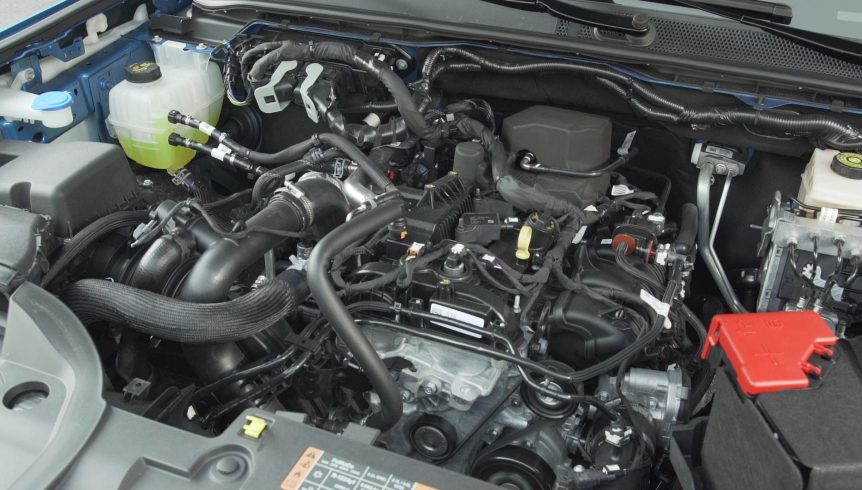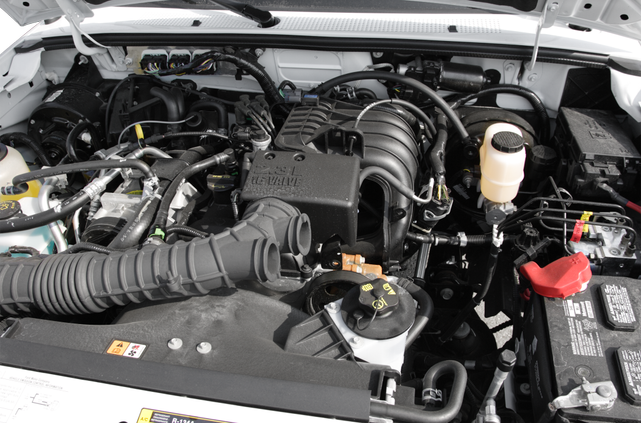The 2.2 Ford Ranger Engine: Ideal for Towing, Off-Roading, and Everyday Use
The 2.2 Ford Ranger Engine: Ideal for Towing, Off-Roading, and Everyday Use
Blog Article
Recognizing the Essentials of Car Engines: Types, Functions, and Attributes

Introduction of Vehicle Engines
An auto engine offers as the heart of a vehicle, transforming gas into mechanical power to thrust it forward. This detailed system comprises different components that work in unison to make certain optimal efficiency and performance. The fundamental procedure of a vehicle engine entails the internal combustion procedure, in which fuel and air are blended, stired up, and removed to develop power.
The engine's design can substantially influence its performance, fuel performance, and emissions. Secret elements consist of the cyndrical tube block, pistons, crankshaft, and camshaft, each playing a crucial function in the engine's general feature. The cyndrical tube block houses the cylinders where burning happens, while the pistons transform the eruptive energy from combustion into linear movement. This movement is then changed right into rotational power by the crankshaft, enabling the vehicle's wheels to turn.
In enhancement to these parts, engines frequently use various systems such as fuel injection, ignition, and cooling systems to enhance performance and longevity. Understanding the basic mechanics of automobile engines is vital for identifying problems and carrying out upkeep, eventually adding to the car's dependability and effectiveness with time.

Kinds of Cars And Truck Engines
Auto engines can be classified right into a number of kinds based upon their style, fuel kind, and functional principles. 2.2 ford ranger engine. One of the most usual groups consist of interior combustion engines (ICE), electric engines, and crossbreed engines
Interior combustion engines, which can be further divided right into gas and diesel engines, run by igniting a fuel-air mix to produce power. Gasoline engines are usually lighter and smoother, while diesel motor are extra fuel-efficient and offer greater torque.
Electric engines make use of electric power kept in batteries to power an electric motor, supplying instantaneous torque and no exhausts throughout operation. As innovation breakthroughs, electric automobiles (EVs) are progressively becoming preferred for their environmental advantages and lower running expenses.
Hybrid engines combine elements of both internal combustion and electrical engines, enabling adaptable source of power and enhanced gas efficiency. They can run in various settings, utilizing either the gasoline engine, the electrical motor, or both at the same time.
Each type of engine has unique benefits and drawbacks, affecting their application in various vehicle kinds and market sectors, from compact autos to heavy-duty vehicles. Recognizing these types is essential for making notified decisions pertaining to vehicle option and efficiency assumptions.
Engine Features Explained
Comprehending engine features is crucial for comprehending just how lorries operate efficiently. At the core of any type of inner burning engine lies the fundamental process of converting fuel into power. This procedure begins with the intake stroke, where air and fuel are drawn into the combustion chamber. Following this, the compression stroke compresses the air-fuel combination, increasing its temperature and pressure.
The ignition occurs next, igniting the mixture and creating a rapid growth of gases. This force drives the piston down during the power stroke, which ultimately translates into the rotational movement of the crankshaft. The exhaust stroke then expels the invested gases from the chamber, making method for a brand-new cycle to begin.
In addition to these main functions, engines likewise integrate their explanation systems that handle air conditioning and lubrication, making sure ideal operational temperatures and lowering rubbing in between relocating parts. This complex interaction of functions enables the engine to produce the power essential for automobile propulsion while preserving efficiency and reliability. Understanding these features supplies useful insight right into the intricacies of automotive design and enhances the capacity to identify and address engine-related problems efficiently.
Trick Engine Attributes
Engine layout includes several vital functions that dramatically affect effectiveness, durability, and efficiency. Among the most crucial facets is the engine setup, that includes inline, V-type, and flat layouts. Each configuration impacts the engine's equilibrium, size, and power output, thus affecting overall automobile characteristics.
An additional necessary attribute is the engine displacement, describing the total quantity of all cylinders. Larger displacements normally produce even more power but might compromise gas efficiency. Engine materials likewise play a crucial role; high-strength and light-weight products, such as aluminum and magnesium alloys, boost efficiency without including excessive weight.
The kind of gas injection system used-- such as multi-port or straight shot-- affects burning performance and emissions. Turbo charging and turbocharging are attributes that boost engine performance by forcing added air right into the burning chamber, raising power result without significantly boosting engine dimension.
Finally, the existence of advanced engine management systems optimizes fuel-air mixture and ignition timing, adding to smoother procedure and far better gas economy. Collectively, these features specify an engine's abilities, establishing the structure for its efficiency and long life in a competitive vehicle landscape.
Maintenance Tips for Engines
Proper engine upkeep is critical for ensuring optimum performance and longevity, as disregarding regular care can bring about considerable issues down the line. To maintain your engine properly, start with regular oil adjustments, usually every 3,000 to 7,500 miles, depending upon the type of oil used. Fresh oil lubes engine elements, reducing rubbing and wear.
Furthermore, keeping an eye on coolant levels is essential to stop overheating. Make sure that the coolant is topped up and remains in good problem to preserve reliable temperature level policy. Routinely check and change air and fuel filters, as clogged up filters can impede air flow and fuel distribution, compromising engine performance.
Furthermore, take notice of ignition system and ignition systems. Used or defective trigger plugs can click over here now lead to misfiring and minimized performance. Inspecting the battery terminals and connections for deterioration is likewise necessary, as a weak battery can affect engine beginning.

Final Thought
In summary, a detailed understanding of auto engines encompasses various types, functions, and key functions that significantly affect lorry efficiency. Inner burning engines, in addition to electrical and hybrid options, demonstrate diverse mechanisms for energy conversion. 2.2 ford ranger engine. Identifying the essential features, such as consumption and exhaust cycles, together with important engine attributes like arrangement and gas shot systems, furnishes cars and truck owners with the knowledge necessary important source for reliable upkeep and procedure, eventually boosting automobile durability and efficiency
An automobile engine serves as the heart of a vehicle, converting gas into mechanical energy to propel it ahead. The fundamental operation of a cars and truck engine involves the inner burning process, where gas and air are blended, fired up, and eliminated to create power.
Routinely examine and replace air and fuel filters, as stopped up filters can hinder air movement and fuel shipment, compromising engine performance. - 2.2 ford ranger engine
In summary, a thorough understanding of auto engines includes numerous types, features, and key attributes that significantly affect car efficiency. Recognizing the crucial functions, such as consumption and exhaust cycles, alongside important engine features like arrangement and fuel injection systems, equips cars and truck owners with the understanding essential for effective upkeep and procedure, ultimately improving lorry longevity and effectiveness.
Report this page